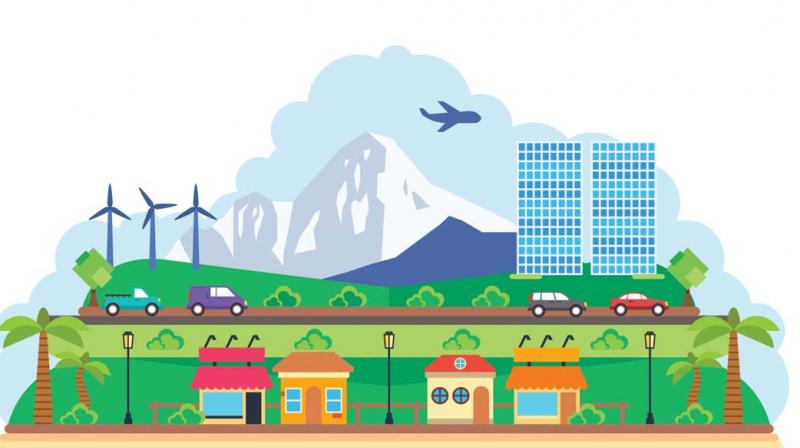Ecoistic: Integrate environmental issues in planning process

One of the most interesting and defining features of today’s world is the large scale urbanization across the globe and greater migration towards cities and larger towns. This has given rise to various environmental issues, challenges and problems over the years. But at the same time it has also created various opportunities for urban development that can contribute to broader goals of improving the quality of life for urban residents while achieving greater levels of global environmental sustainability. Another important aspect to be considered is that there is also an increasing and positive role of cities that can benefit the society in terms of innovative urban planning with a focus on its environmental components. It is also exciting to explore how a variety of issues have been taken into account in different urban areas, and how a range of activities have been implemented that show the potential for integrating the environmental components in urban planning and management.
Over the last four decades, cities and urban spaces have become increasingly prominent in terms of addressing global environmental issues. A number of studies and research have focused on different methods that the urban governing bodies could use to integrate environmental issues into urban development and related aspects. The focus needs to be on the Urban Development Strategy with two major features that would determine the effectiveness of using the Urban Development Strategy to integrate environmental issues into the overall planning process.
The first important feature is to derive an analysis from select major cities from the developed / developing nations that have earlier engaged in similar process of developing an Urban Development Action Plan or a Strategy. The second important feature is to incorporate all relevant learning and insights from the strategies and action plans carried out and implemented in these select urban centres which have engaged themselves in this process. Thus, these two features can help identify various elements that urban centres can use to integrate environment and related issues in urban planning and management.
Another interesting aspect is that the rapid pace of urbanization also brings in certain opportunities to build more innovative, creative and sustainable cities, that would help in using the world’s natural resources in a much more efficient and effective manner. It is also observed that it offers strategies for elected representatives and decision makers to introduce various measures that can spur inclusive growth and development and help reduce poverty, while ensuring sustainable levels of consumption and production as well. Apart from these, there are certain key proactive measures that leaders across the world can take up to help improve resource efficiency and reduce negative environmental impacts as well. Some of them are briefly described as follows:
- Incorporate new and emerging ideas about the green economy, which show how density can also generate environmental and social opportunities, including through green urban infrastructure;
- Undertake environmental & ecological rehabilitation projects that can enhance ecosystem services, thereby improving the quality of environment while reducing costs of air pollution and water treatment programmes & schemes;
- Help mainstream environmental issues and related priorities into urban development and local development plans, particularly through Urban Development Strategies (UDS) that work to reconcile urban economic growth with better resource efficiency;
- Integrate greenhouse gas emissions - reduction strategies in urban planning and management that can reduce the impact that urban spaces have on the global environment while improving the quality of life for urban populations;
- Create greener opportunities for younger populations - activities that would help rejuvenate and restore urban ecosystems and natural resource base;
- Enhance access to energy by expanding green energy supplies, thereby providing energy / electricity to households that were previously reliant on traditional and polluting methods such as wood or kerosene;
- Promote & popularize environmental education through classroom learning followed by relevant hands-on experiences;
- Underpinning each of these strategies with strong political support and commitment.
- Regular engagement of employees and volunteers from corporates, industries, institution, government and private organizations in ecological restoration activities in addition to financial and monetary support;
These are some of the broad aspects that can be integrated into sustainable urban development through a mechanism that can be termed as ‘Comprehensive Urban Development Strategies & Action Plan’ for the cities in future.

